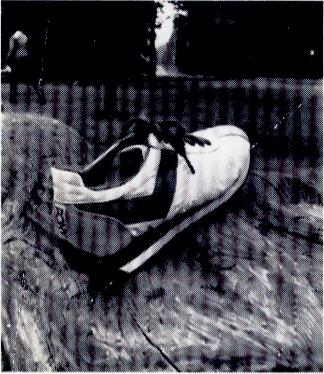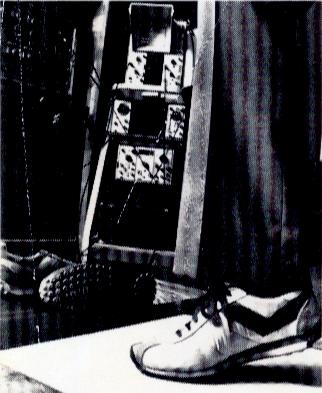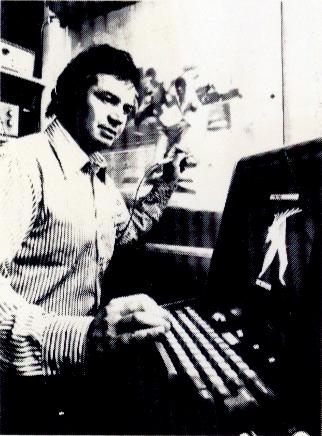| Previous | Index | Next |
![]()
1 The Original: What do you do if you already have one of the best designed all-purpose training flats on the marketplace, a running shoe rated by Runner's World as the second best in mechanical performance? Well, if you are Pony Sporting Goods you do not stand hack and pat your hacks. This shoe, the Pony Runner, is now a distant ancestor in the rapidly changing world of athletic footwear. And the main reason is that for runners who are serious about their art - and how many are not these days? - there is a new generation of footwear in the marketplace. In their quest for the perfect sneaker, Pony, with the assistance of that ingenious New York scientist Gideon Ariel, is pushing the development of athletic footwear into areas previously only talked about. If that sounds far fetched, then maybe it will be more believable if you understand what happened when Pony took this shoe, along with others, to Ariel, one of th. most brilliant minds in North American sport development. As director cf Computerized Biomechanical Analysis Inc., and a consultant to the U.S. Olympic Committee, Ariel has been a pioneer at tying the science of' motion into physical skills necessary to perform athletic feats. His efforts, however, are now being turned towards the improvement of' athletic equipment, particularly footwear.
2 I'he Testing: The foot has a complex and highly efficient system of joints which helps give it tremendous flexibility, movement and weight-hearing capabilities. Moreover, 5(1 per cent of the hones in the human body are to he found in the feet, with each foot comprising 26 individual hones. During the act of running, the many movements of' the body influence the position of forces on the foot and its parts, forces which ere transferred to the shoe. Ariel decided that, since footwear must be designed to perform in stress conditions, it must therefore be analysed in realistic "action" conditions. Although this type of dynamic testing cannot be simulated in a laboratory, the use of' a highly-sensitive force platform enabled actual running to he (lone in Ariel's test centre, where the forces were traced, measured and quantified immediately. Iligh speed cameras producing slow motion cinematography were used in conjunction with the force plate to record the forces of' "foot-strike" in different samples at every point of' contact under actual performance conditions. The force platform, with the frame-byfranme evaluation of the motion picture film, fed data to a highly-sophisticated computer. When Aricl had all the information he felt was needed to begin his -A analysis, he moved to the next step in the complex process - the computer.
3 The Analysis: So delicate are the relationships between an athlete's moving parts they cannot he accurately analysed simply by looking at the slowest of slop-action film. A process of frame-by-frame, body-part by body-part assessment is necessary to make optimum use of film, a process that is excruciatingly time-consuming. It took Ariel about 10,000 hours over seven years to create the programs (hat instruct his computer. This painstaking preliminary work, however, now meant that he could quickly quantify information pertaining to the entire running motion, including the effect it has on the shoe. The resultant data yielded the instantaneous forces on the shoe as a function of time, providing data not only on the biomechanical behavior of the runner, but the critical information on how the physical construction and material composition of the shoe performed during actual conditions. Without this highly-developed process, Ariel felt the construction of a truly efficient running shoe could not be done. What he found when testing the Pony Runner was that the shoe, as it was, could not be refined sufficiently to produce the desired "ultimate" product. Aricl decided, under exclusive contract to Pony, to work to develop a shoe based upon the motion of the foot in relation to the body, and the stresses [)faced upon the shoe materials during a race.
CANADIAN FOOTWEAR JOURNAL August 1978



![]()
| Previous | Index | Next |